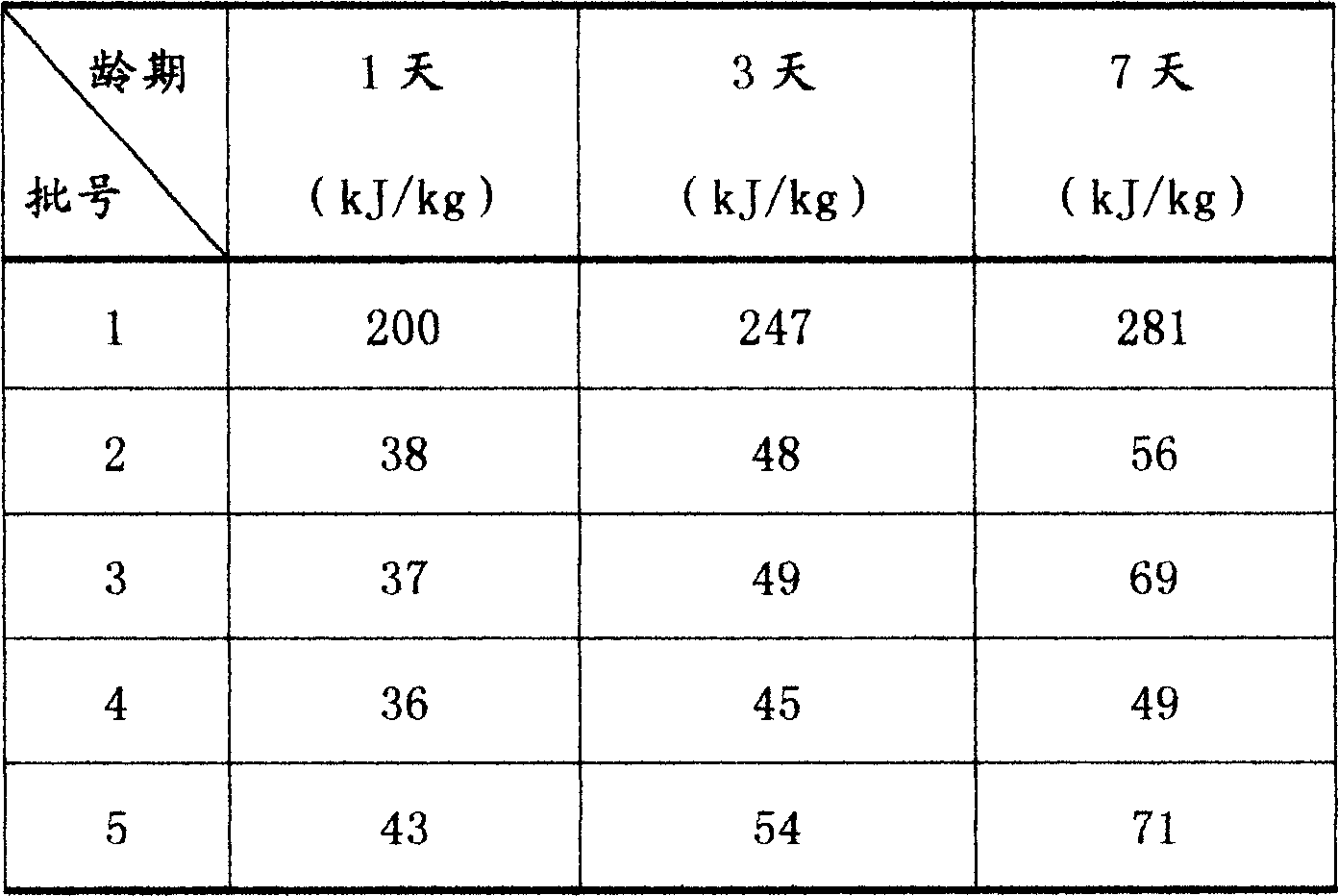Compounding process of concrete hydration reducer
A preparation method and heat of hydration technology, applied in the field of concrete admixtures, can solve the problems of backward temperature control measures, limited temperature reduction, and high cost
- Summary
- Abstract
- Description
- Claims
- Application Information
AI Technical Summary
Problems solved by technology
Method used
Image
Examples
Embodiment 1
[0008] Will be selected from polyacrylic acid-starch graft, polyglycolic acid-lactic acid copolymer, modified starch, polyglycolic acid-lactic acid copolymer, polyformamide, polymethyl methacrylate, polyacrylonitrile alkyl ester and ethyl A raw material in the base cellulose is dissolved in water; reacted at 5-55°C, and the reacted water phase and solid phase are separated, and the separated solid phase is the concrete hydration heat reducer; the separated solid phase is Drying; crushing, the fineness is less than 0.315mm. The selected from polyacrylic acid-starch graft, polyglycolic acid-lactic acid copolymer, modified starch, polyglycolic acid-lactic acid copolymer, polyformamide, polymethyl methacrylate, polyacrylonitrile alkyl ester and The molar ratio of a raw material in ethyl cellulose to water is: 1:1-50.
Embodiment 2
[0010] Will be selected from polyacrylic acid-starch graft, polyglycolic acid-lactic acid copolymer, modified starch, polyglycolic acid-lactic acid copolymer, polyformamide, polymethyl methacrylate, polyacrylonitrile alkyl ester and ethyl A raw material in the base cellulose is dissolved in water; react at 10-50°C, and separate the reacted water phase and solid phase, and the separated solid phase is the concrete hydration heat reducer; the separated solid phase is Drying; crushing, the fineness is less than 0.315mm. The selected from polyacrylic acid-starch graft, polyglycolic acid-lactic acid copolymer, modified starch, polyglycolic acid-lactic acid copolymer, polyformamide, polymethyl methacrylate, polyacrylonitrile alkyl ester and The molar ratio of a raw material in ethyl cellulose to water is: 1:5-40.
Embodiment 3
[0012] Will be selected from polyacrylic acid-starch graft, polyglycolic acid-lactic acid copolymer, modified starch, polyglycolic acid-lactic acid copolymer, polyformamide, polymethyl methacrylate, polyacrylonitrile alkyl ester and ethyl A raw material in the base cellulose is dissolved in water; react at 15-40°C, and separate the reacted water phase and solid phase, and the separated solid phase is the concrete hydration heat reducer; the separated solid phase is Drying; crushing, the fineness is less than 0.315mm. The selected from polyacrylic acid-starch graft, polyglycolic acid-lactic acid copolymer, modified starch, polyglycolic acid-lactic acid copolymer, polyformamide, polymethyl methacrylate, polyacrylonitrile alkyl ester and The molar ratio of a raw material in ethyl cellulose to water is: 1:8-35.
PUM
| Property | Measurement | Unit |
|---|---|---|
| Fineness | aaaaa | aaaaa |
Abstract
Description
Claims
Application Information
 Login to View More
Login to View More - R&D
- Intellectual Property
- Life Sciences
- Materials
- Tech Scout
- Unparalleled Data Quality
- Higher Quality Content
- 60% Fewer Hallucinations
Browse by: Latest US Patents, China's latest patents, Technical Efficacy Thesaurus, Application Domain, Technology Topic, Popular Technical Reports.
© 2025 PatSnap. All rights reserved.Legal|Privacy policy|Modern Slavery Act Transparency Statement|Sitemap|About US| Contact US: help@patsnap.com

